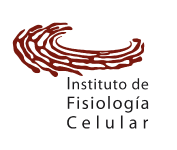Postgastrulation Smad2-deficient embryos show defects in embryo turning and anterior morphogenesis
Heyer, J., Escalante-Alcalde, D., Lia, M., Boettinger, E., Edelmann, W., Stewart, C. L., & Kucherlapati, R. (1999). Postgastrulation Smad2-deficient embryos show defects in embryo turning and anterior morphogenesis. Proceedings of the National Academy of Sciences, 96(22), 12595–12600. doi:10.1073/pnas.96.22.12595
SMAD2 is a member of the transforming growth factor beta and activin-signaling pathway, To examine the role of Smad2 in postgastrulation development, we independently generated mice with a null mutation in this gene. Smad2-deficient embryos die around day 7.5 of gestation because of failure of gastrulation and failure to establish an anterior-posterior (A-P) axis. Expression of the homeobox gene Hex (the earliest known marker of the A-P polarity and the prospective head organizer) was found to be missing in Smad2-deficient embryos. Homozygous mutant embryos and embryonic stem cells formed mesoderm derivatives revealing that mesoderm induction is SMAD2 independent. In the presence of wild-type extraembryonic tissues, Smad2-deficient embryos developed beyond 7.5 and up to 10.5 days postcoitum, demonstrating a requirement for SMAD2 in extraembryonic tissues for the generation of an A-P axis and gastrulation, The rescued postgastrulation embryos showed malformation of head structures, abnormal embryo turning, and cyclopia. Our results show that Smad2 expression is required at several stages during embryogenesis.




